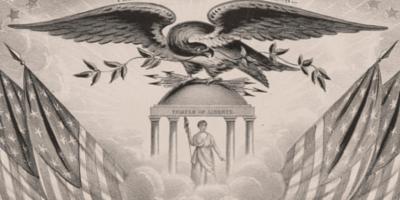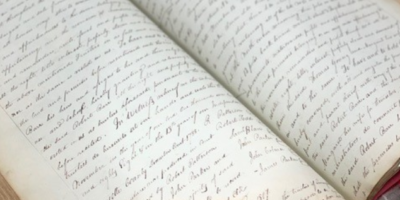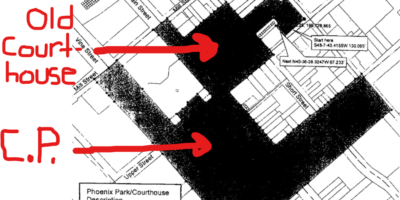By Betsy Taylor
America’s founding documents speak in the first person plural with such power—“We the People…We hold these truths…We have warned them…We have reminded them…We have conjured them…We, therefore…solemnly publish and declare.” Why has it now become so hard to say “We” as Americans together?
This question has hounded me recently. On August 5, Dan Terry, a dear childhood friend was gunned down in the beautiful mountains of Afghanistan, along with nine others, on a Christian medical mission. Meanwhile, a month later the ninth anniversary of 9/11 brought our festering incapacities into the open, as national opposition to an Islamic Community Center in Manhattan has been justified primarily through a kind of ventriloquy that claims to speak for families who lost loved ones on 9/11.
But who is the “We the People” who mourn our losses on 9/11? Far Right celebrities, like Glenn Beck or Sarah Palin, build unity by drawing a national boundary, saying this identity is in, and that identity is out. This is a magical and not a rational process. Their boundary around the “hallowed ground” of Manhattan’s Ground Zero jumps around because it is not based on geography or logic, but on the vagaries of psychological need, an imaginary and inflamed border to a national identity that has to appear rigid because it is so weak. This imagined “America” is an unstable, nervous kind of “we.” So, for Palin, big cities like New York City are mostly not the “real America,” yet Ground Zero suddenly becomes the realest, sacredest essence of “America” when threatened by an imagined “Victory Mosque.”
republicanism and Republicanism
It is true that a few conservative pundits have spoken against the Far Right. Kathleen Parker has argued that reasoned adherence to the Constitution trumps the concern that an Islamic Community Center would “offend the sensitivities” of mourning 9/11 families. Another conservative, Ross Douthat, has observed that there are two America’s in a creative tension that propels us forward—one America based on abstract law, and the other America a folk bound together by a shared white European culture.
But even these conservative views sideline what is most precious. The “We the People” that instituted this country was made of different stuff. Listen to the capacious and elegant simplicity of the July 4 Declaration. “We, therefore, the Representatives of the united States of America, in General Congress, Assembled…do…by Authority of the good People of these Colonies…have full Power…And…mutually pledge to each other our Lives, our Fortunes, and our sacred Honor.” This “We the People” is deeply misunderstood and misrepresented by contemporary movements that call themselves “conservative.” Much of the Far Right claims the mantle of the Constitution, but, in fact, grabs up bits and pieces of old imagery to weave it together in a distorted way that creates a new and dangerous kind of national self-identity.
Twenty-first-century America has largely forgotten that its founding political philosophy was republicanism, which emphasized res publica, meaning the things of the public good. The “We the People” of Jefferson’s manifesto, was a (small ‘r’) republican “We”. It was a philosophy in which citizens assembled, debated and acted together to steward the commons.
Eighteenth century democratic republicanism is, in other words, misrepresented by conservative commentators like Douthat. It does not require citizens to construct a common national identity out of a shared language, ethnicity, religion. It does not require, as do Sarah Palin and Glenn Beck, that we forge our collectivity by enclosing ourselves in a hallowed space with defensive boundaries where near-magical icons, like flags or war memorials, carry a sacred essence of common identity.
Rather, the (small ‘r’) republican national identity is what political philosopher Hannah Arendt describes as a civic “We the People”—the bonds between people who pledge to act together for the common good. It is the stuff of covenant, not culture or law. The (small ‘r’) republican “We” is more open and less anxious about boundaries. Its strength comes from the civic trust, respect, and equality that arises from working together over time to build and steward actual communities, places, public institutions, public communications media. It is a covenant to both care for the commons and to safeguard individual dignity and agency—to recognize their interdependence.
Manhattan’s Islamic Community Center: a republican act
The proposed Islamic Community Center is a good example of this kind of American collective spirit—despite its surreal caricatures in the Far Right blogosphere as a “triumphalist supremacist Ground Zero mega-mosque,” “terrorist,” “wolf in sheep’s clothing,” etc., etc. (The FAQ webpage of the Cordoba Institute has easily verifiable refutations of accusations, so I won’t bother backtalking wackadoodlism.)
Take, for example, the inspiring life story of immigration and Americanization of Daisy Khan, co-founder of the proposed center. Born in Kashmir, she was early shaped by Sufi traditions in her family. Sufism is a diverse reform movement that emerged in the earliest years of Islam. It emphasizes love, the direct experience of God, and equality. Fifteen years old when she immigrated to Long Island, Khan became a successful interior designer in New York City. But she hungered for more than material rewards.
In diverse civic causes, Khan built up a rich network of civic friendships that brought Christians, Jews and Muslims together. In 1997, she married a distinguished leader in American Sufism, Imam Feisal Abdul Rauf. Together they struggle to create institutions for an American form of Islam and for interfaith dialogue. They helped to found the American Society for Muslim Advancement in 1997, which describes its core values as equality, compassion and mercy, and “cultural and religious harmony through interfaith collaboration.” It pledges “to work in collaboration with others for the common good to create just and peaceful societies.” The group’s core values are not far from the original conception of republicanism.
Inspired by the YMCA and the Jewish Community Center, they began to organize for an Islamic community center to serve both the general public and the thousands of Muslims living in their neighborhood in lower Manhattan, where two badly overcrowded mosques had been for several decades.
The Islamic community center, along with its $100 million investment, could be a vital contribution to a part of lower Manhattan deeply damaged by the 9/11 attacks—an area of strip joints and abandoned factories. A plurality of Manhattan residents welcome it (by 46 to 36%). In a city with about 600,000 to 700,000 Muslims according to Columbia University researchers, such a center seems past due. And, it is growing organically out of the neighborhood where the organizers and their partners have deep roots. The depth and warmth of these local roots can be seen by looking at the list of partners on the Cordoba Institute website—a veritable Who’s Who of respected Jewish, Christian and interfaith organizations in the area.
Why on earth are people upset by this community center, which models itself on the most mainstream of Jewish and Christian civic institutions? The only possible explanation is that the Far Right rather arbitrarily seized upon it when they needed a new ritual of national self-purging.
Dan Terry’s Christian mission
For me, the media spectacle around what Roderick Long calls the “non-Ground Zero non-mosque” was made more painful because it happened in August as I struggled to mourn the shocking death of my friend Dan Terry. On August 5, Dan was brutally gunned down in Afghanistan; the Taliban claimed responsibility.
Death is always surreal, but his death was bitterly surreal for me. I was born to three generations of Christian missionaries who roamed parts of the world where Islam was a normal part of everyday social life: flawed, admirable and variegated—like anything else human. It was a civic landscape where one’s identity could be curiously and enjoyably open at the edges, where ordinary, everyday life wove together Hindus, Muslims, Sikhs, and Christians as neighbors, friends, co-workers.
Dan Terry’s parents, like mine, left America after World War II, fired with a certain kind of American post-war idealism. We were raised like cousins in the close-knit networks of missionary families in India. Our families were shaped by the international, broadly humanitarian vision of Social Gospel Christianity. It built upon a hatred of war formed in Christian pacifism, but it also remained boldly hopeful for the moral possibilities in compassionate nation-building.
It’s hard to remember this earlier kind of Christian political imagination. These days, the public face of Christianity tends to be a fundamentalism that wants to shrink government’s role in economic justice and welfare, while increasing its power in war and moral control. The political culture in which Dan Terry and I grew up is one that is almost invisible in American national imagination now, but it drew, I believe, on eighteenth and nineteenth century roots of American life that still smolder and can be recaptured.
Our parents and grandparents fit in well and thrived in post-Independence India, where their tolerant yet passionate faith fit well with Gandhian political values. There was a shared sense of spiritual responsibility to end war and poverty, to build peace, to fight hunger and illness, to humble the rich and proud. Central to this, was the sense that inequality is incompatible with a spiritual life, and a belief that democracy is only possible when citizens can meet under conditions of social equality to debate and act together collectively for the common good.
Mourning Dan Terry
It has been hard to read the hundreds of remembrances that have flooded into memorial websites for Dan Terry. Again and again, people speak of his simplicity, infectious joy and venturesome spirit. As Irish journalist and long time friend Michael Semple said, “there was not the whiff of the martyr about him.” And yet, in a real sense, he was a martyr, but a very different one from those of Glenn Beck’s imagination.
Dan first traveled to Afghanistan as a teenager, when his family drove overland back from India. He fell in love with the land and people and returned after college in the U.S. to begin over 30 years of work in community development driven by local people. In Afghanistan, he met and married a Finnish nurse who shared his passion for social justice.
Doing their good works in health, literacy, empowerment and much else, Dan and Seija raised three daughters through peace and ghastly wars—through Russian and Taliban regimes, and then through the American military and international NGO years. They survived because they always built deep networks of community and solidarity, buoyed by Dan’s fluency in local languages. The stories about Dan are legend and filled with his characteristic ways of inciting hope and hijinks around him. He always seemed ready to find the world wondrous, fun, lots of hard work, and tragic—all at once. I believe that much of this flowed directly from his religious faith, his tenacity and toughness in grappling with adversity, his mix of hope and realism with joy-in-life.
My heart was shrouded in sadness in the weeks since his death. But, was I offended when Afghan Muslims sent condolences or held a memorial Iftar, where Muslims and Christians grieved and prayed together for him, in the beautiful gardens of Babur, the sixteenth century Mughul (and Muslim) ruler? No, I wasn’t, though nearby me here in the United States, Rudy Guiliani, Sarah Palin and other Far Right celebrities say that they are “offended” by the idea of Muslims praying so close to Ground Zero.
For me, it is a healing consolation that we can grieve together across the divides of religion! To me, this seems a springing up of hope and new possibility. Dan Terry loved the Afghan people and believed, as he said, that “with any conflict can only come more and more conflict, or a real resolution to the problem. So, it is in the places of greatest conflict where there is hope for the greatest resolution.”
Dan often said, “We are all knotted together in the same carpet.” This dynamic sense of human solidarity, open and creative, seems much closer to the founding vision of America—as a civic “We the People”—than nervous, chest-beating and belligerant pseudo-conservatisms telling us to fear Muslim projects in Manhattan.
Betsy Taylor is co-author (with Herbert Reid) of Recovering the Commons: Democracy, Place and Global Justice. She can be reached at blog.betsy.taylor@gmail.com




Beth Connors-Manke
Betsy:
I was moved by this piece, especially the nobility and humanity you describe in Dan Terry. I also loved that you brought in Arendt–you first introduced her to me in ST 500, years back now, and I am still grateful for that. Arendt, as you describe here, envisions ways to allow for our differences while we choose to act for a shared and sustainable reality. So very important for us politically and personally. Thanks for the article.